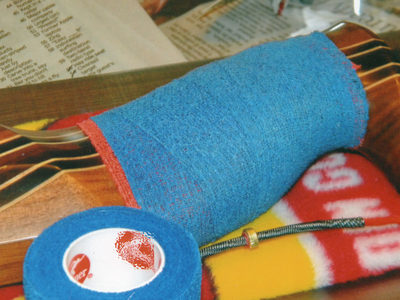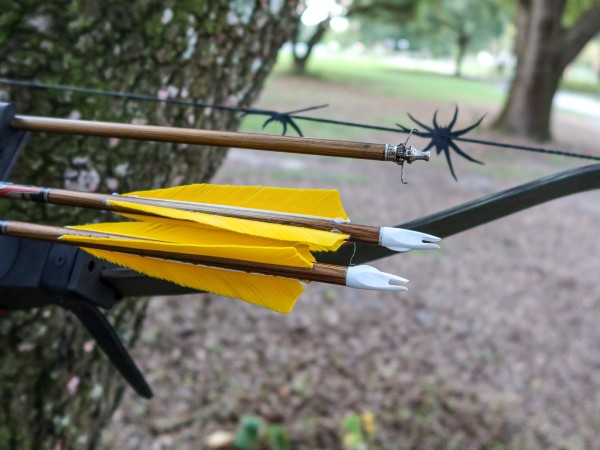“Quality Deer Management works!”
Many of us have seen this campaign slogan handwritten beneath the Polaroid pictures posted on the bragging board at the local game registration station. Or the “Let him go so he can grow” billboards perched along our highways. They beckon to the unsuspecting observer, saying “Just practice Quality Deer Management and you too can harvest a trophy buck!” There seems to be something unsettling about this, but every hunter seems to have become awestruck by the sight of a monster buck. Every hunter, myself included, dreams of getting a shot at that elusive King of the Forest that has managed to live to the ripe old age when he is capable of growing a trophy rack of antlers. Quality Deer Management (QDM) does seem to produce bucks with big antlers, but so do game farms, and no self-respecting hunter thinks of caged animals as trophies. So is this admiration really only about the size of the antlers? I don’t think so.
I contend that what makes bruiser bucks so appealing is not the sheer size of the antlers, but something else. Harvesting a monster buck seems to suggest something about the character of the deer taken and the hunter as well. It says something about that encounter in the frosty leaves and crisp November air when wills collide. The hunter and the King have both grown skilled at observing and learning, and now these skills have led them to a life and death confrontation. It seems that taking an animal of that size is more of a challenge, and therefore requires more skill and dedication from the hunter. Let’s face it; two year-old deer generally do not grow trophy-class racks. Older deer, generally speaking, are more intelligent than younger deer because they have survived longer, making them relatively more wary and difficult to kill. So there appears to be a correlation between the size of antlers and the deer’s intelligence. Consequently, whoever harvests such a deer must be more adept than the average hunter, because you need more skill to kill a King.
In the October/November 2004 issue of Traditional Bowhunter, David Petersen (with whom regular readers should be familiar) provided an appealing argument for the co-evolution of hunter and prey that helps illustrate my point. He hit the nail on the head when on page 100 he wrote:
“It was, after all, predators—human and otherwise-who sculpted the poetically perfected defenses of deer and other big game animals…even as those animals sculpted our fellow predators and us…deer and deer hunter share an essential symbiotic relationship-a mutually dependent mutual-aid society. Always have, always must.”
Evolution by natural selection in action: hunters shape prey by providing the selection pressures that sharpen the animals’ senses. As the less wary animals are killed, the keen survive, creating a trend toward smarter prey.
The prey, in turn shape the hunters because as the prey becomes more adept at evading them, the hunters must improve their previous efforts or go hungry. In this manner, reciprocal selection pressures create a general trend toward increased awareness by both parties. This reciprocal feedback is what helped shape predators and their prey into the keen critters that they are today.
Just as this “mutual-aid society” worked across thousands of years to weed out inept hunter genes and dumb deer genes, it also works within a generation. Through mistakes in the woods, we hunters learn to be more adept at our profession. I know I had to learn the “stay calm and pick a spot” lesson the hard way. In the same manner, when we hunters slip up our prey gets a free education – deer really do look in trees! Those that do not learn will not survive. This reciprocal feedback does not and has not stopped. Every action has lasting effects, and we predators are firmly embedded in this “mutually dependent mutual-aid society” whether we choose to acknowledge it or not. Therefore, to be truly respectful of our quarry, and ultimately our own well being, we must honor and cultivate this relationship.
Given this mutually effective relationship, it would seem to follow that if this “deal” is broken by one side that the other development would be eventually be affected in a similar manner. If the development on one side is stunted, then the competence of the other would also be negatively influenced. The eventual result would be a downward spiral and a general loss of competence and intelligence for both hunter and prey.
By selecting only for large antlered deer, Quality Deer Management changes the selective pressures applied by hunters. QDM allows for relatively unwary animals to survive in a false reality, and consequently the evolution of ever keener senses by the deer becomes stunted. By allowing relatively unfit deer to reach ripe old age and “shooter” status, QDM compromises the selective pressures that create increased awareness. In short: QDM breaks the deal.
When the development of keener senses in deer diminishes, so does the correlation between age and intelligence. With this crucial link gone, QDM trophies may actually be dumber than their un-coddled peers. Shooting a trophy-class buck then becomes a matter of practicing Quality Deer Management and letting all bucks become brutes. Do we really think that QDM works better than Mother Nature? Or maybe we don’t want to wait for her time tested effectiveness to provide a big rack of antlers, so we’ll just do it ourselves. In a society full of instant gratifications, QDM has become the means to immediate fulfillment of the desire to match wits with an animal, replacing a natural method that has stood the test of time. It’s the easy road to a head mount above the fireplace. But this short cut rings phony and hollow, just like prepackaged meat from a super market.
The required lessons-shaping of hunter and prey through time-tested means, will, and adaptation-are missing, and with them goes the deeper meaning of a trophy buck. QDM lacks the sense of earning an animal, and given the reciprocal nature of the mutual-aid society, when one side falters, the other follows. In this manner, the Kings of the Forest are unwittingly stripped of their significance. Quite simply: Quality Deer Management does not allow them to become Kings.
As an alternative, I propose for the betterment of both species and the increased vigor of the forest community that we practice Smart Deer Management. This management plan is beneficial to both sides, and it is simple: kill the dumb ones and eat them. In my book, if you’re not hunting to get a meal, you have no business in the woods (and antlers make thin soup). Harvest what you need, eat what you harvest, and be thankful for it. With this strategy, selective pressures will return to normal. As they do, intelligence and acuity of senses will increase for hunter and prey alike. Deer will learn to live without human coddling, and hunters will learn to hunt. Trophy bucks will then regain their venerable status as Kings of the Forest.







Thanks for the thoughtful point of view! I too feel that too much enthusiasm is placed on antlers. That said, I give the spikes a break. I feel a kinship with those young bucks, since I too was young (once) and dumb (still?) and felt the pressures of the world on my young shoulders. In fact, given the chance, I usually try to provide a little education to those young fellows. If a spike buck loiters around me I’ll give him a startle and let him see me. Hopefully that serves as food for thought in his young mind.
After that though, look out. Once they sprout a few branches it is game on. After all, a person has to eat…